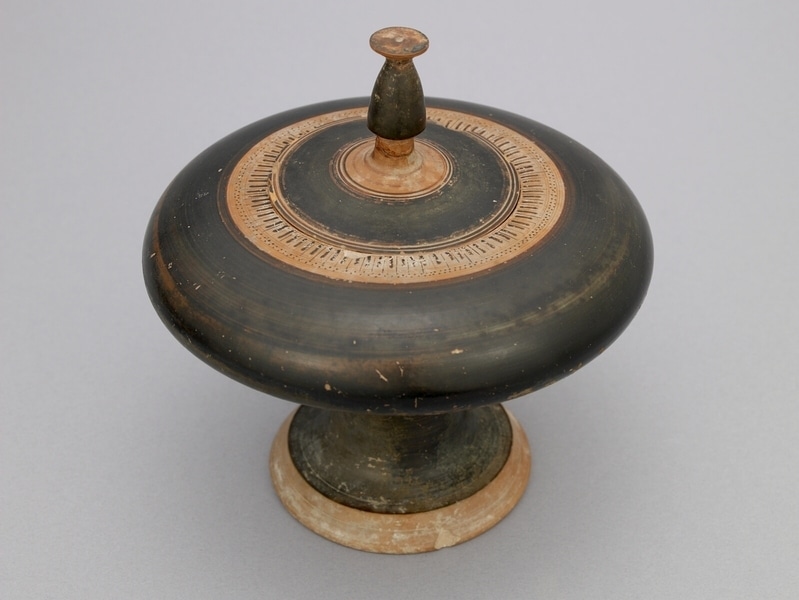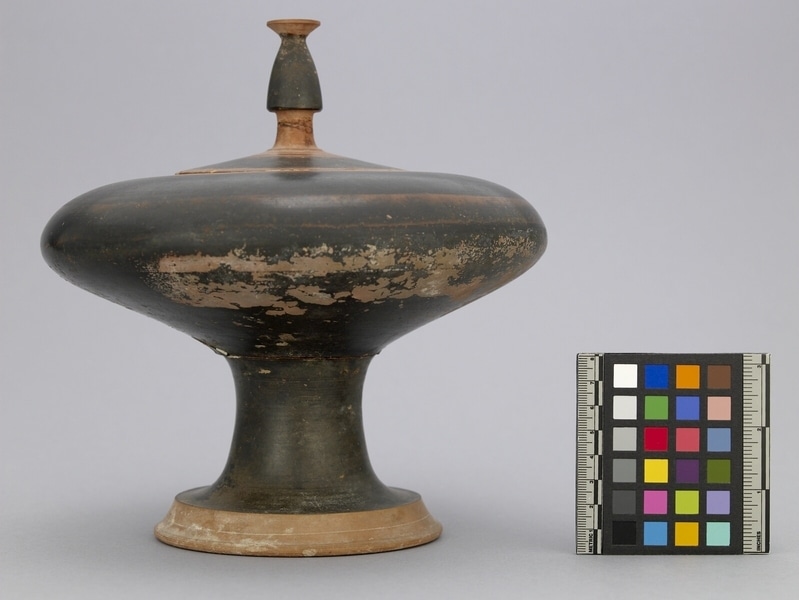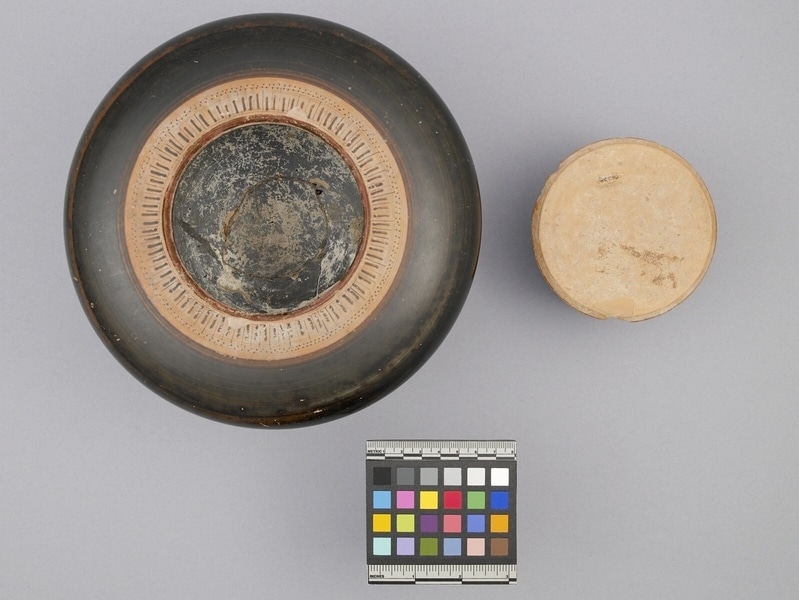Jar Item Number: Ce228 a-b from the MOA: University of British Columbia



Description
Clay jar (parts a-b) consisting a saucer-like body with deep incurved rim mounted atop a tall, cylindrical foot with dish-like base. Base (part a) has slightly convex edge. Decoration consists of a reserve band around opening, painted with radiating black tongues and lines as well as a band of small dots. Rest of the body is black except for the edge of base which is reserved. Underside of base has a reserve band near its edge and its centre, but the rest is black reserve. Lid (part b) consists of a disk with a beveled edge to fit the opening on body; tall handle. Lid is painted black with some areas in reserve. Underneath of knob is in reserve; disk of lid has thin reserved circles near handle and edge. Underside reserved.
History Of Use
The plemochoe was a jar with a turned in rim, high foot and lid. Its design allowed it to carry valuable liquids, such as perfume, without spillage. They were commonly used in bathing but also served in religious ceremonies, were also used in a funerary context in the form of grave goods.
Cultural Context
utilitarian; funerary
Narrative
This collection was said to have been acquired by James George during his service in Greece (Athens) from 1945-48. J.W. Hayes (from the Royal Ontario Museum, 1985) said the piece was either Attic or Boeotian.
Item History
- Made in Greece during 525
- Owned by James George before November 28, 1985
- Received from James George (Donor) on November 28, 1985
What
Who
- Culture
- Greek
- Previous Owner
- James George
- Received from
- James George (Donor)
Where
- Holding Institution
- MOA: University of British Columbia
- Made in
- Greece
When
- Creation Date
- during 525
- Ownership Date
- before November 28, 1985
- Acquisition Date
- on November 28, 1985
Other
- Item Classes
- ceramics
- Condition
- poor
- Current Location
- Case 96
- Accession Number
- 1066/0007 a-b